
Drop III Inches
Paul Hagstrom & Mike Maginnis
Drop /// Inches is a podcast devoted to Apple's other 8-bit computer, the Apple ///. We cover the history, the people, hardware, software, literature, usage, tricks, repair, and even news.
- 1 hour 10 minutesEpisode 19: May Wait No August
As August 2017 draws to a close, here is an episode we recorded in May with a lead-in we recorded earlier in August. It’s been a busy summer. Topics include: Martin Haye’s Satan Mode disk, Reactive Micro’s universal power supply, Paul Rickards’ WiFi232, Big Mess o’ Wires’ Floppy Emu, John Morris’ Applesauce, Great Plains Hardisk Accounting.
Here are some of the links that relate to the stuff we talked about.
Cult of Mac article: Today in History, Apple Introduces the Doomed Apple ///.
Martin Haye’s HackFest 2017 entry (“Satan mode” boot disk)
- HackFest video descriptions (Martin’s is first)
- Apple III development memos (last two are most pertinent)
Reactive Micro’s universal power supply kit for Apple ///
Toshiba FlashAir WiFi-enabled SD card
FlashAir SD card developers site
Floppy Emu
- Floppy Emu on the Apple /// (as a boot disk)
- Unidisk firmware update for Floppy Emu
John Morris’ talk about Applesauce at KansasFest 2017
Apple ///s crunching election data
Apple Orchard scans on yesterbits.com
- v5n6 July 1984 (last Paul’s ever laid eyes on) will be there (and on archive.org) shortly.
Great Plains Hardisk Accounting and related links
- GP Modules listed in the Resource Guide
- 20 years ago, Great Plains had a reunion
- GP logos through the years
- Microsoft Dynamics GP
- Manuals and disk images when finished will be posted in a separate blog post on either/both yesterbits.com and/or drop-iii-inches.com
[A couple of these links are I.O.U.s, like the Apple Orchard and Hardisk Accounting links, which will come later, but we just wanted to get this episode finally posted.]
31 August 2017, 10:10 am - 1 hour 41 minutesEpisode 18: Don Burtis
We’re back, with an episode that was three months in the making. Mike and Paul talk (in November 2016) about the state of things in our Apple /// worlds, and then speak at some length with Don Burtis (in December 2016), who designed (among many other things) the Microsoft SoftCard III.
Don Burtis, who is probably most prominently associated, in the eyes of the Apple II and III enthusiasts, as the designer of the Microsoft SoftCard, a Z80 coprocessor card that enabled the Apple II series computers to run CP/M software. As Paul Allen indicated in his book “Idea Man,” this was strategically important for Microsoft early on, as VisiCalc was beginning to take off on the Apple II for businesses, as it would allow Microsoft’s existing software to run on the platform without the delay and investment of porting the software to the 6502. Microsoft had a run at the project internally but was having trouble with the design, and Don Burtis (of Burtronix) was called in to design the board. And later, the SoftCard III for the Apple III, as well as several other peripheral cards for the Apple III (including the Floppycard III, Protocard III, Printercard III).
If you’re here just for the conversation with Don Burtis, it starts at minute 52.
But before we talked with Don, we talked about several of the following things:
Apple Orchard
- Apple Orchard on yesterbits site
- Apple Orchard on archive.org
- Contact magazine on archive.org
- Fall 1980 v1n2: Apple III is here!
- Aug 1983 v4n5: Apple III, Wordstar, NoDOS 2
- Mar 1984 v5n3: Apple II and III trap mouses
- Apple /// Guide for humans (Sep-Oct 1982 v3n4)
- Using SOS (Mar 1984 v5n3)
- A Look inside Apple /// (Fall 1980 v1n2)
- Apple /// Users unite (Summer 1981 v2n2)
- Apple /// Dabbling (Summer 1981 v2n2)
- Apple /// BASIC compare (Aug 1983 v4n5)
- Apple /// text file case converter (Sep 1983 v4n6)
- Burtronix/Rana FloppyCard III (Feb 1984 v5n2)
- Burtronix/Rana PrinterCard III (Jan 1984, v5n1)
- /// E-Z pieces review (Jun 1984 v5n5)
- Word Juggler review (Feb 1983 v4n1)
- Dvorak keyboard for Apple /// (Feb 1984 v5n2)
- Coming Full Circle (Aug 1983 v4n5)
- Unlocking Apple ///, part 1 (Mar-Apr 1982 v3n1)
- Unlocking Apple ///, part 2 (May-Jun 1982 v3n2) (invokable modules)
- Unlocking Apple ///, part 3 (Sep-Oct 1982 v3n4)
- Unlocking Apple ///, part 4 (Mar 1983 v4n2)
- Unlocking Apple ///, part 5 (Feb 1984 v5n2)
- Software developers and the Apple /// (Winter 1981-82 v2n4)
- Control your input (Nov-Dec 1982 v3n5)
- CP/M to SOS text mover (Sep 1983 v4n6)
- Apple /// clock install (Nov 1983 v4n8)
- Hot stuff for Apple /// (Jun 1984 v5n5)
- Driving your disk (Nov 1983 v4n8)
- Installing an Apple /// driver (Oct 1983 v4n7)
- Changing CP/M driver (Oct 1983 v4n7)
- The Apple nobody knows, part 1 (Fall 1981 v2n3)
- The Apple nobody knows, part 2 (Mar-Apr 1982 v3n1)
- ///plus, development program (Mar 1984 v5n3)
Apple National Account Program brochure (April 1982)
Universal PSU from ReactiveMicro
Apple /// (to /// plus) upgrade
- Interlace upgrade
- Clock upgrade kit on eBay (vintagemicros)
- Upgrade kit contained: Keyboard, cover, keyboard encoder ROM, logo replacements
- VintageMicros on eBay
- vintagemicros.com
Axlon RAMDISK 320
- Drop /// Inches episode 13
- Paul’s Axlon RAMDISK 320
- InfoWorld Nov 29 1982, RAMDISK 320 now CP/M compatible
- A brief review from Softalk December 1982
- RAMdisk 320 ad
- RAMdisk 320 review in Open Apple Gazette v2n2
- Connecting TRS-80 Model 100 to Apple /// (Open Apple Gazette v2n2)
Gibson Light Pen system, manual scans
Apple /// SAM
Chris Zuhars’ homebrew Apple ///
Quinn Dunki’s Veronica
Hantarex CT 2000 monitor
Charles Mangin (Retroconnector) news:
- Apple /// Raspberry Pi enclosure on Shapeways blog
- Making the Apple /// case (time lapse video)
- Replacement floppy drive doors
- Model M keyboard (that… does not type)
A few Apple III images from Ian
Taylor Pohlman interviewed by Computer History Museum
And here, finally, are links to many of the things that came up in our conversation with Don Burtis:
- Don Burtis on LinkedIn
- Paul Allen’s book, “Idea Man”
- D-K research (LisaCalc to Lotus Jazz)
- Diversified I/O (SoftBackup)
- Z-80 SoftCard manuals (Don Burtis’ proofing copy)
- West Coast Computer Fair review in Open Apple Gazette v1n6 (May 1983)
- FloppyCard III (Apple Orchard Feb 1984, v5n2)
- Vern Raburn
- Microcomputing Sep 1982
- Kilobaud Microcomputing, Oct 1981
- California Computer Systems (CCS)
- PrinterCard III (Apple Orchard Jan 1984, v5n1)
- Extender card, prototyping cards
- Burtronix ProtoCard III mentioned in Open Apple Gazette v1n5
- 8086/2 “Rana box”: Infoworld April 30, 1984
- Goodwill industries auction site
- DTACK Grounded 68K development board Apple II interface
- Vista Computer Company ad (Byte, Oct 1982). TimeCard III, A800 Floppy Disk Controller
- Story of phone.com at Unwired Planet
- Berkeley Nucleonics
- DB-2
- Eclipse Aviation
- Vulcan Ventures
- Capstone Turbine
- Eclipse 500
- Titan Aerospace
22 January 2017, 1:56 am - 1 hour 7 minutesEpisode 17: PSUs, KPIs, RPS, and more!
In this episode, Mike and Paul chat about various things that were newsworthy when the recording was made. Replacement power supplies, insights from the last Apple /// product manager, Apple ///-themed iPhone cases, drivers, Record Processing Services, and more.
For those following along in real time, this episode was recorded a long time after the one that preceded it, but even longer before it was actually released. There were some technical issues with the recording that required a fairly laborious amount of reconstruction, and, well, life kept happening as well. But, we’re still here.
So, here are the linky links.
- UltimateMicro’s universal power supply announced (a2central)
- UltimateApple2.com
- Retroconnector keyboard shield
- Apple /// Pascal scans, complete (apple2scans)
- Quark Word Juggler for Apple /// (apple2scans)
- Quark Lexicheck for Apple /// (apple2scans)
- David Fradin (product manager) talks about Why I failed with the Apple ///
- Apple /// Management Demo binder:
- New commit in MESS fixes Atomic Defense
- Apple /// in-browser emulation has started to work
- Trü protection iPhone 6/6s case
- Original Wyatt McDill painting on Etsy
- dr3vers on github
- eBay: old Visicalc
- eBay: Apple /// with System Saver
- eBay: Apple /// with extras
- Record Processing Services (RPS)
- Mentioned in Apple /// Dimensions v1n3 (apple2scans)
- Scans and disk image (yesterbits)
9 August 2016, 7:34 pm - 1 hour 36 minutesEpisode 16: Taylor Pohlman
In this episode, we interview Taylor Pohlman, who joined Apple in 1979 and became the Apple /// Product Marketing Manager in 1981, managing the “Reintroduction” of the Apple ///. He is also well known for the series of columns in Softalk magazine (“The Third BASIC”) introducing concepts in Business BASIC programming. Later, he left Apple to found Forethought (the company responsible for FileMaker and PowerPoint), co-founded Regent Systems, managed the development of GS-BASIC for the Apple IIGS, and then returned to Apple from 1986 to 1992, and is currently principal at Rohner & Associates, having worked with Sybase and Autodesk along the way.
We talked with Taylor about the innovations the Apple /// and SOS brought to the computing landscape, the launch at Disneyland, frustrations and missed opportunities with the Apple ///. We also heard about several other things, not specific to the Apple ///, such as the early days at Apple, interactions with Steve Jobs, launching the black Bell & Howell Apple II, using an Apple II to rock a baby cradle triggered by sound, Apple employees storming the Lisa building in Halloween costumes, the short-lived Apple IV, and lots more.
Links:
- Q & A: Taylor Pohlman (Infoworld, Dec 10, 1984).
- NCC ’80 and the Apple III (Compute, Jul/Aug 1980).
- Apple /// Dimensions (“Let Me Reintroduce Myself”).
- Apple “Adam” contest announcement ad.
- “Adam” contest winners (Applesource 14).
- Andy Hertzfeld “Spoiled” on Bandleys 3, 4, Texaco Towers.
- Very early floorplan of Bandley 1.
7 March 2016, 5:17 pm - 1 hour 59 minutesEpisode 15: Baseball and Business BASIC
Mike came across a reference to “The greatest baseball game never played”, a well-hyped simulated baseball game broadcast in July 1982, pitting National League and American League stars of diverse eras against each other in an ultimate fictitious game—simulated using a custom-written program on an Apple ///. The game was later pressed as an LP, and contains not only the game but a description of the mechanics and technology as well.
Other various topics of interest are touched on as well. Chris on the Apple /// enthusiasts group uploaded an Apple /// parts list sourced from the Level 2 service manual, for help in repairs, replacing capacitors, etc. ReActive Micro is contemplating adding Apple /// support to its universal power supply, designed to replace the innards of our aging Apple ones. We talk a bit about the Wico trackball and locating the drivers for it, inspired by Robert’s post on Facebook, and about Apple magazine volume 3 number 1 from May 1982, and about On Three pulling the 65802 replacement kits after discovering matching individual 65802s to individual Apple ///s to be extremely hit-and-miss.
And, we close with Taylor Pohlman’s talk from the Phase /// conference about the history and development of Business BASIC, including a challenge he posed to the community for developing a method for using menus and window overlays, taken up by On Three magazine as a programming contest (announced in volume 5 number 7, entries due by December 1, 1988).
The audio on this talk is not great, but it is possible to hear it. The section of the talk that was incorporated into the On Three contest was quoted in the magazine as well.
Links:
- Computerworld July 12, 1982 (Koufax to face Ruth at Schibe)
- Greatest Baseball Game Never Played (at Wikipedia)
- Softalk July 1982 on Apple /// (and II) in baseball.
- ReActive Micro (if you have serious interest in an Apple /// version of the universal power supply, let them know; they are assessing potential demand now in order to decide whether it is worth producing them).
- On Three magazine scans:
- March 1988, v5n3: Review of Wico trackball
- May 1988, v5n5: Trackball ///: The sequel (now sold by On Three)
- Jun 1988, v5n6: Letters section, noting reliability issues with 65802.
- July 1988, v5n7: On Three programming contest announced
- Sep/Oct 1988 v5n9/10: Bob Consorti’s screen save/restore invokable; further notes on reliability issues with 65802.
- Apple /// Dimensions
- Apple magazine v3n1 (May 1982) (or smaller 300dpi scan)
- Apple III Parts List (from Level 2 service manual)
- Exploring Business BASIC (text of Taylor Pohlman’s columns, collected together as initial steps of a book project, nearly 250 pages!)
2 March 2016, 5:53 am - 1 hour 55 minutesEpisode 14: Daniel Kottke, Diving into SOS.DRIVER, Misc., and Etc.
We begin 2016 discussing the “Driv3rs” python script with its author, Mike Whalen, some miscellaneous topics, and a phone interview with Daniel Kottke, from some years ago.
Mike Whalen’s Driv3rs script will take an SOS.DRIVER file and extract information about all of the drivers contained within, and we talk about using the script, finding drivers, the format of drivers within the SOS.DRIVER file, and other related things. Other miscellaneous topics include recapping power supplies, Apple /// prototyping boards, being foiled by copy protection, Monitor /// designs, the TRS-80 Models II and 4P, and probably other things.
Daniel Kottke is surely well known to anyone listening to this podcast, but he was an Apple technician in the very early days, working on the Apple /// project up until about when it shipped (then moving over to the Mac team). Daniel speaks with Mike in a phone interview from several years ago about various interesting features of the Apple /// and its development, and the general atmosphere within Apple before its launch.
Within the episode, various links were promised for the show notes, and they are as follows:
- Driv3rs python script on github
- Ivan Drucker’s cppo script to extract files from disk images. In python, supports DOS 3.3, ProDOS, SOS, DOS-ordered and ProDOS-ordered images, and can extract one file or all of them to the local filesystem.
- Apple /// SOS Device Driver Writer’s Guide
- Apple /// power supply recapping and repair video
- InfoWorld April 2, 1984 Keystroke Database and Report Generator reviews
- InfoWorld May 28, 1984 response to Keystroke review from a reader (not actually from Brock itself)
- Videx Ultraterm Apple /// support notice
- On Three v7n11-12, including ad for Draw On /// with Graphics Tablet support. (On page 5, $20 extra at the end of 1990.)
- Titan /// + //e users guide. Mentions using 65C02 in conjunction with Titan cards on page 4-7.
- Dave Ottalini reports notes from Bob Consorti about using the 65802 in the Apple /// in The Best of Ottalini #8.
9 January 2016, 9:54 pm - 1 hour 41 minutesEpisode 13: Wendell Sander
This month, Paul’s Apple /// has trouble connecting with the world outside, so he speculates on possibilities for WiFi connectivity, and Mike’s Apple /// has trouble connecting with any worlds at all. So, we turn our attention to literature, including the full Apple /// patent, a survey of Apple II users, an early interview with Trip Hawkins, and books on the Apple ///. Paul’s gotten himself a Cursor /// and some late-era PFS software, and unexpectedly managed to get a CMC Quick-20 drive working, Mike’s gotten an Axlon 320 RAMdrive. And Charles Mangin has created a miniature Apple ///.
The second half of the episode is an interview Mike conducted over the phone with Wendell Sander, designer of the Apple ///, from a couple of years ago, covering things like the Apple-internal interactions between departments, problems and solutions to initial reliability issues, the RAM design and peripherals. Recorded from a speaker through the air for added retro sound quality, but very interesting indeed!
- Apple /// full patent
- Nishida Radio’s Unisdisk Air
- FlashAir W-02
- Charles Mangin’s miniature Apple /// (Raspberry Pi case)
- Charles Mangin’s video of designing the miniature Apple ///
- Apple magazine v1n2 (sufficient, scan could be better)
- Cursor /// box scan
- Cursor /// manual scan
- CMC Quick-20 disks
- Axlon RAMDISK 320 disks (PDF scan)
- Eddie Adamis: BASIC Keywords for the Apple III
- Eddie Adamis: Business BASIC for the Apple III
- AppleLogic: What really killed the Apple ///
31 October 2015, 6:26 pm - 1 hour 20 minutesEpisode 12: Martin Haye has created a M0N5T3R
On this episode, we talk with Martin Haye about his experience writing an assembler/disassembler for the Apple /// as his HackFest entry at KansasFest 2015. Martin is an experienced Apple II programmer, who decided to spend KansasFest familiarizing himself with the Apple ///. After initial forays into SOS didn’t go well, and realizing that in order to write assembly language programs on the Apple /// it would be useful to have a system monitor more like the one familiar from the Apple II, and a mini-assembler for 6502 code as well, Martin dug into the ROM code and wrote M0N5T3R, a small mini-assembler and disassembler for the Apple ///. And it boots instantly, too! Although it’s small, it was written in the space of a couple of days as part of the HackFest contest (and won second place!) at KansasFest. But he learned a lot from the experience, and we learned a lot from talking to him about it. Martin also gave us some first-hand descriptions of his trip to the Stanford archives of Apple documents (which we had discussed a bit in the previous episode). We also talk of one of the first e-books, written on an Apple /// and uploaded to The Source in real time, and an Apple /// found in the woods.
Some interesting links:
- Martin’s video demo of M0N5T3R booting
- DTCA3DOC-085 Apple /// boot ROM listing
- DTCA3DOC-193 Inside the Apple /// Computer ROM
- Archive guide to the Stanford collection
- KansasFest
- DSK file of M0N5T3R as of KansasFest 2015
- Computerworld: “First all-electronic novel published” (Jan 31, 1983)
- Burke Campbell: Prophesy to the Wind (blog post about e-book)
- An elegant computer for a more civilized age (Ryan Powers found an Apple /// in the woods)
8 September 2015, 1:50 pm - 1 hour 33 minutesEpisode 11: Fort Stanford, b/w Phase III: Dr. Melvin Astrahan
We’re back for Episode 11. This time, we talk about really very small advances in booting a /// from a flash drive, the Cursor /// joystick and the history of The Keyboard Company, and a visit to the Stanford archives of Apple materials to get the real scoop on EMI/RFI emissions and the timeline of the /// plus. After that, another talk from the 1987 Phase III conference, this one by Dr. Melvin Astrahan, author of Draw On /// and the Mr. Sandman game, talking about the graphical abilities of the Apple ///.
The trip to the Stanford archives yielded two interesting Apple ///-related documents. More about these on apple2scans.net (link will be retroactively inserted here when it’s ready over there), but here are the documents themselves:
- Apple /// plus beta testing (Nov 15, 1982)
- Preliminary RFI testing on Apple III computer (Jun 24, 1980)
Links of Interest:
- Michael Muller’s History of The Keyboard Company, on Wendell Sander’s apple1notes site
- Mike Willegal’s page on early Apple keyboards
- SDFloppy II
- RetroConnector cable for connecting /// and SDFloppy II
- RetroConnector keyboard interface for Apple //e
- Archive guide to the Stanford Apple collection
- Draw On ///
27 June 2015, 10:17 pm - 52 minutes 56 secondsEpisode 10: III Drives Diverged
In this episode, Paul and Mike talk about the wooden Apple /// sculpture featured on the cover of Apple Magazine v2n2 and an email interview with Tom Eckert, the artist who created it. Other topics include the issues and ultimate success in booting an Apple /// with only an SD-card drive emulator, the feasibility of using alternative CP/M cards, the new firmware for the Floppy Emu to do UniDisk 3.5 emulation, and some preliminary discussion of the variants of the Cursor /// joystick.
Interview with Tom Eckert
Plamen Vasilyov’s SDFloppy II
Nishida Radio’s UNISDISK
Big Mess o’ Wires’ Floppy Emu
BMOW announces firmware update for Apple II compatibility10 April 2015, 4:23 pm - 2 hours 1 minuteEpisode 9: Phase III: The Future of the Apple III Hardware and SOS
Back from a long hiatus, Mike and Paul discuss the newly-available cornucopia of games for the Apple ///, and then introduce the next bit of audio from the 1987 Phase III conference. The conference presentation was a panel discussion of the future of Apple III hardware and SOS, with Bob Consorti of On Three and Rob Turner of Apple (but formerly of On Three) as the panelists. Discussion topics include the meaning of “obsolete,” the feasibility of a SCSI card, the problems with creating a slot expander, the availability and support of the /// vs. the IIGS and marketing. There is a fair amount of audience participation in the panel, and the questions and monologues from the audience are not always very easy to hear. There also seemed to be a dance party going on next door.
Games discussed:
Mr. Sandman (Dr. Mel Astrahan, On Three)
Tic-Tac-Toe (John Lomartire)
Apple Chomp (Dan A. Kunesh)
Atomic Defense (Andy Hertzfeld)Disk images: a3games.zip
Three-part column in Softalk: Hot Rod III (George Oetzel, July-September 1983). Part two is about how to use an Apple III joystick in Apple II emulation mode, which isn’t quite what we claimed it was about in the episode.
We also claimed there would be a link about Woz’s tic-tac-toe algorithm, it might appear here in a little while.
24 February 2015, 7:51 pm - More Episodes? Get the App
Your feedback is valuable to us. Should you encounter any bugs, glitches, lack of functionality or other problems, please email us on [email protected] or join Moon.FM Telegram Group where you can talk directly to the dev team who are happy to answer any queries.
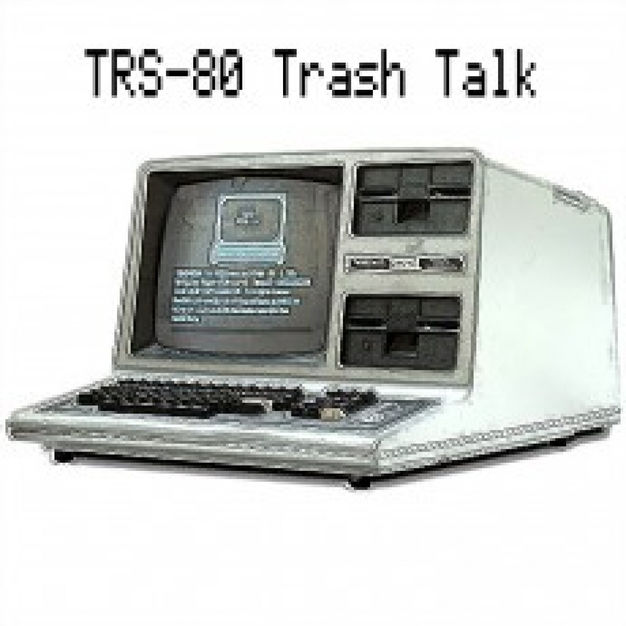 TRS-80 Trash Talk
TRS-80 Trash Talk
 1 MHz Apple II Podcast
1 MHz Apple II Podcast
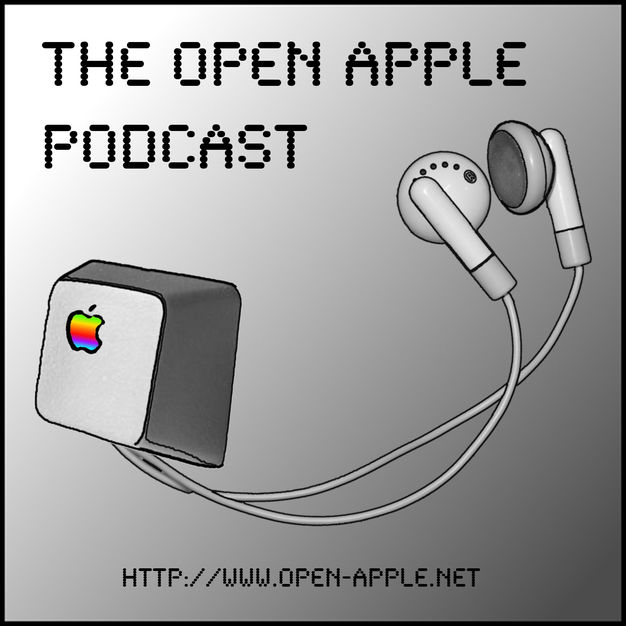 Open Apple
Open Apple
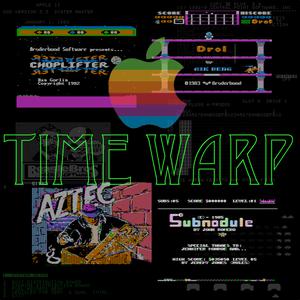 Apple Time Warp
Apple Time Warp
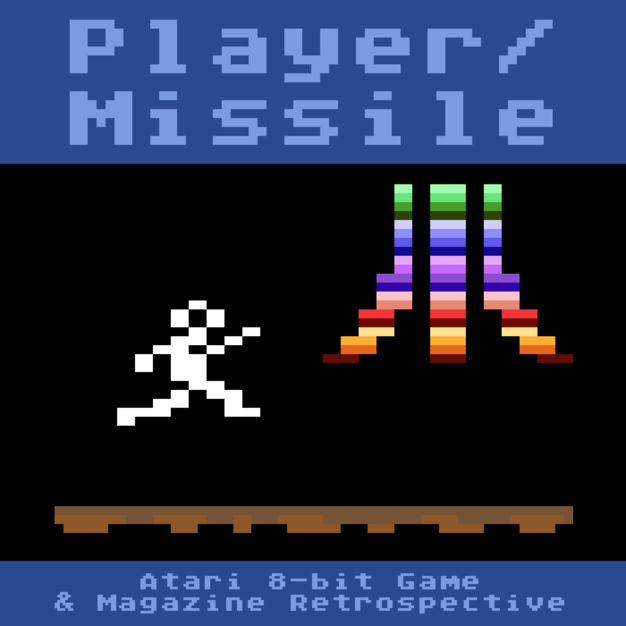 Player/Missile
Player/Missile
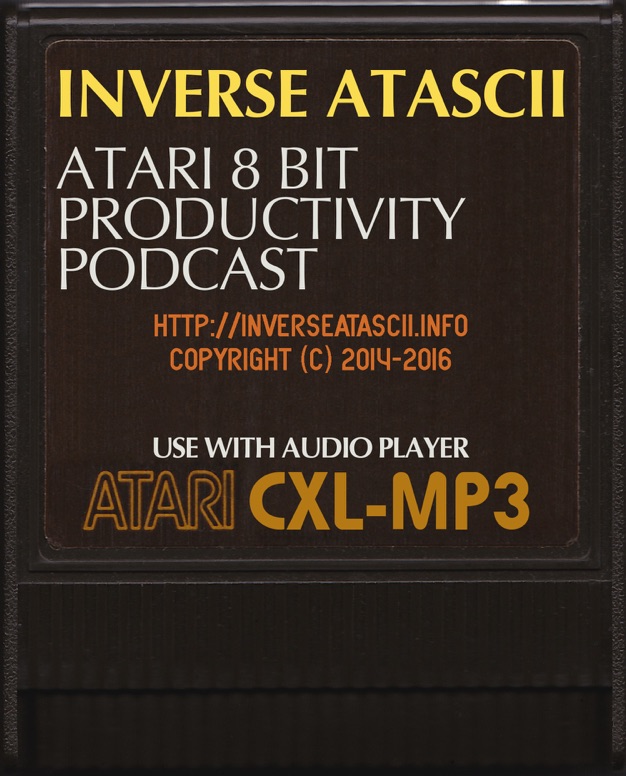 Inverse ATASCII
Inverse ATASCII